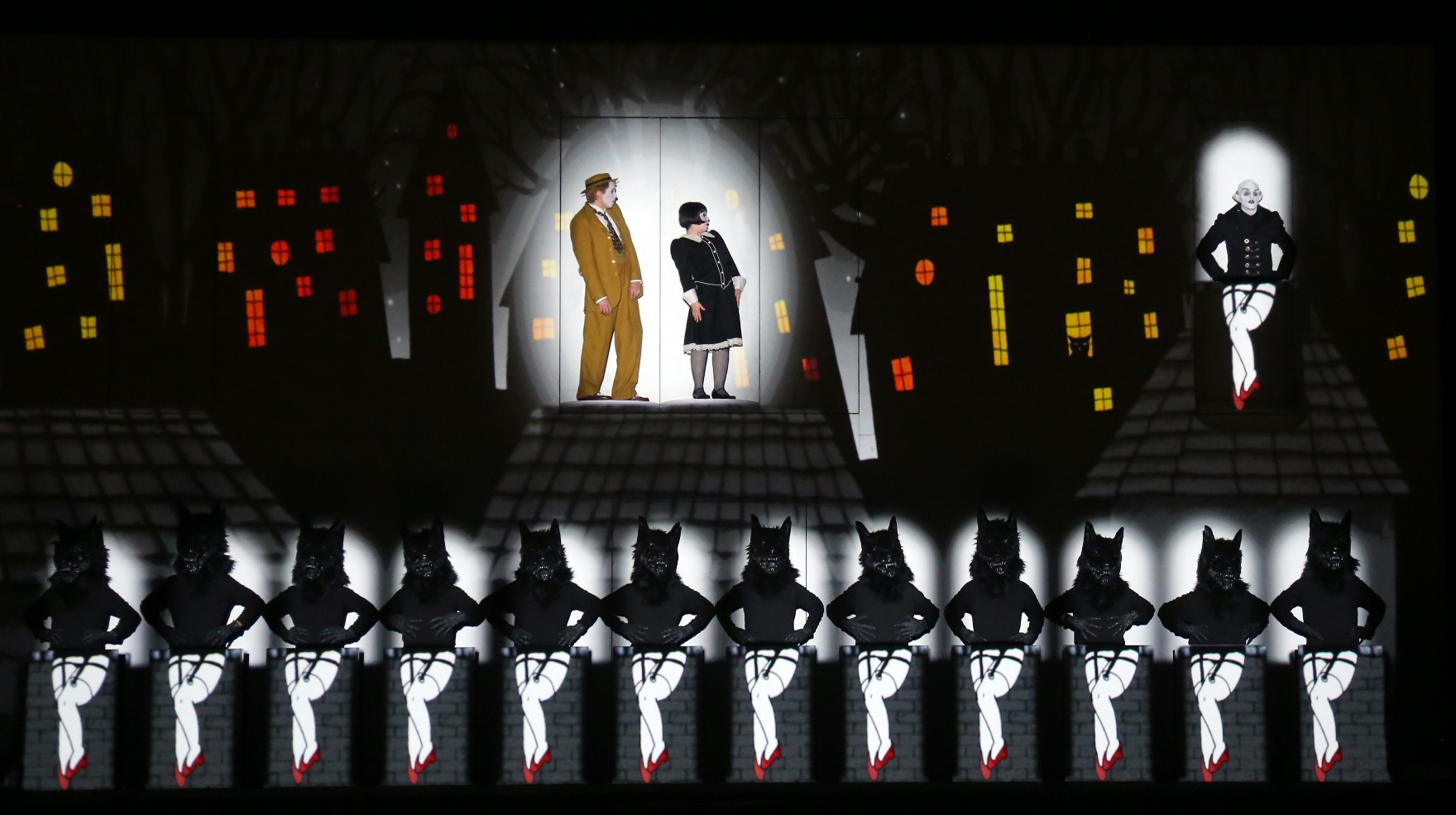‘Magic Flute’ meets magic animation in L.A. Opera’s hit show
/By Truman C. Wang
Thursday, March 3, 2016
All Photos by Craigs T. Mathew/Los Angeles Opera
CAST: Ben Bliss (Tamino), Marita Sølberg (Pamina), Jonathan Michie (Papageno), So Young Park (Queen of the Night), Wilhelm Schwinghammer (Sarastro), Brenton Ryan (Monostatos), Stacey Tappan (First Lady), Summer Hassan (Second Lady), Peabody Southwell (Third Lady), Nicholas Brownlee (Speaker), Vanessa Becerra (Papagena), Frederick Ballentine (First Armored Man), Nicholas Brownlee (Second Armored Man)
CREATIVE TEAM: Conductor, James Conlon. Directors: Suzanne Andrade & Barrie Kosky. Concept: 1927 (Suzanne Andrade, Paul Barritt). Animation: Paul Barritt. Scenery and Costume Designer: Esther Bialas. Chorus Director: Grant Gershon
Sunday, February 28, 2016 at Dorothy Chandler Pavilion, Los Angeles
When the L.A. Opera advertised its Magic Flute as “an exciting new experience unlike anything encountered before on the operatic stage”, it was not kidding. Even for this seasoned, jaded music critic, seeing the production for the first time was an eye-opening experience. Through the magic of hand-drawn animation and video projection, the opera’s popular characters find themselves inside an interactive, colorful, animated comic strip during the musical numbers, or inside a 1920’s silent film with amusing titles that effectively replace all the dialogs. All that the cast had to do were standing still at designated spots on the projection screen and singing their hearts out. Since there are no dialogs, the only acting skills required are the silent film-style melodrama and facial expressions. In a stroke of genius, Monostatos assumes the identity of Nosferatu from F.W. Murnau’s 1922 vampire classic, and the Queen of the Night appears as a scary giant Black Widow spider. The video animation by Paul Barritt accurately narrates the plot during the musical numbers, often to hilarious effects – Pamina and Papageno racing and hopping over rooftops in search of Tamino like in a video game, Papageno’s bragging his dragon slaying skills with karate chops and comic strip action graphics, or Papageno's magic bells transforming Monostatos and his gang into the Rockettes.
Ben Bliss as Tamino and Jonathan Michie as Papageno
At times, however, the staggering amount of animated graphics proved be too much of a good thing, as when during most of the scenes with Sarastro, the spinning, twirling mechanical heads and creatures that are supposed to represent wisdom and Enlightenment became too distracting at the expense of the music and the plot narrative, so much so that one completely missed Monostato’s short but vital remark in Act II that he shall go join the dark side with the Queen. Moreover, many important dialogs, props and Schikaneder’s original stage directions are intentionally left out. You will not find the flute in this “Magic Flute”, even during the all-important water-and-fire trials in Act II. Also missing are Papageno’s glockenspiel and birdcage. The Queen’s Act II appearance loses its shock value without the thunderclap or the dagger. The vaudeville-inspired costumes by Esther Bialas are attractive and colorful, but why is Papagena donning a feathered suit but her Papageno is in street clothes? Last but not least, the production left out most of the visual Masonic symbols and Egyptian motifs, but oddly preserved the Masonic anti-feminism in the titles (“Do not fall for women’s tricks”, “She’s a woman, has a woman’s mentality”, etc.)
The young, attractive cast all acquitted themselves well. Without the usual demands of physical acting and directorial tyranny, they were freed up to focus on what they did best – singing. Norwegian soprano Marita Sølberg made her auspicious L.A. Opera debut as Pamina, singing “Ach ich fühl's” with lovely tones and sweet pathos. With Ben Bliss’ clear-voiced tenor, this Tamino-Pamina pair were a match made in heaven. Baritone Jonathan Michie sang lustily and musically as the lovable birdcatcher Papageno and also found his love match in soprano Vanessa Becerra’s perky Papagena. German bass Wilhelm Schwinghammer, also in his company debut, sounded rather thin and unfocused as Sarastro. Coloratura soprano So Young Park garnered the greatest ovation of the evening as the vengeful Queen of the Night, popping out the rapid runs of high C’s, E’s and F’s in her show-stopping “Der Hölle Rache” as easily as our bird-loving couple popping out their little Papagenos and Papagenas.
Jonathan Michie as Papageno and Vanessa Becerra as Papagena
The L.A. Opera Chorus made outstanding contributions invisibly from the wings, and only appeared on stage in the Act II finale. James Conlon conducted a highly congenial reading of this effervescent, charming score, written during the most dire period two months before Mozart’s final illness. Special kudos must be given to the busy keyboardist who had to juggle among the fortepiano, playing snippets of a Mozart sonata during the silent film titles, as well as the bells and glockenspiel during Papageno’s songs.
Truman C. Wang is Editor-in-Chief of Classical Voice, whose articles have appeared in the San Gabriel Valley Tribune, the Pasadena Star-News, other Southern California publications, as well as the Hawaiian Chinese Daily.






